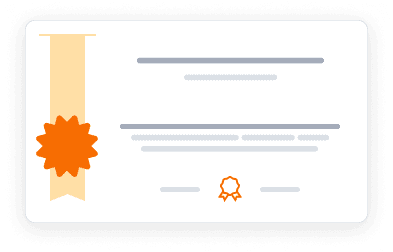This course is part of Mastering Software Development in R.
This course cannot be purchased separately - to access the complete learning experience, graded assignments, and earn certificates, you'll need to enroll in the full Mastering Software Development in R Specialization program. You can audit this specific course for free to explore the content, which includes access to course materials and lectures. This allows you to learn at your own pace without any financial commitment.
4
(157 ratings)
12,508 already enrolled
Instructors:
English
پښتو, বাংলা, اردو, 3 more
What you'll learn
Create and customize advanced ggplot2 visualizations
Develop interactive maps and plots
Build custom themes and graphical elements
Work with grid graphics and mapping tools
Extend ggplot2 for specialized visualization needs
Skills you'll gain
This course includes:
6 Hours PreRecorded video
3 assignments
Access on Mobile, Tablet, Desktop
FullTime access
Shareable certificate
Get a Completion Certificate
Share your certificate with prospective employers and your professional network on LinkedIn.
Created by
Provided by

Top companies offer this course to their employees
Top companies provide this course to enhance their employees' skills, ensuring they excel in handling complex projects and drive organizational success.





There are 5 modules in this course
This comprehensive course focuses on building advanced data visualization tools using R and the ggplot2 framework. Students learn to create and extend visualization systems, develop custom themes and graphical elements, and implement interactive maps. The curriculum covers mapping with ggmap, working with grid graphics, and creating new visualization building blocks to address emerging data types and analytical needs.
Welcome to Building Data Visualization Tools
Module 1 · 20 Minutes to complete
Plotting with ggplot2
Module 2 · 2 Hours to complete
Mapping and interactive plots
Module 3 · 2 Hours to complete
The grid Package
Module 4 · 1 Hours to complete
Building New Graphical Elements
Module 5 · 6 Hours to complete
Fee Structure
Individual course purchase is not available - to enroll in this course with a certificate, you need to purchase the complete Professional Certificate Course. For enrollment and detailed fee structure, visit the following: Mastering Software Development in R
Instructors
Pioneering Research in Environmental Health
Dr. Anderson is an Assistant Professor at Colorado State University in the Department of Environmental & Radiological Health Sciences and a Faculty Associate in the Department of Statistics. She is actively involved in the university’s Partnership of Air Quality, Climate, and Health and serves on the editorial boards of Epidemiology and Environmental Health Perspectives. Previously, she completed a postdoctoral appointment in Biostatistics at Johns Hopkins Bloomberg School of Public Health and earned her PhD in Engineering from Yale University. Her research focuses on health risks related to climate-related exposures, such as heat waves and air pollution, and she has conducted several national-level studies. Dr. Anderson has also developed open-source R software packages to enhance environmental epidemiologic research.
Professor of Biostatistics at Johns Hopkins University
Dr. Roger D. Peng is a Professor of Biostatistics at the Johns Hopkins Bloomberg School of Public Health and serves as a Co-Editor of the Simply Statistics blog. He earned his PhD in Statistics from the University of California, Los Angeles, and is recognized for his research in air pollution, health risk assessment, and statistical methods for environmental data. In 2016, he received the Mortimer Spiegelman Award from the American Public Health Association, honoring his significant contributions to health statistics. Dr. Peng developed the Statistical Programming course at Johns Hopkins to equip students with essential computational tools for data analysis. Additionally, he is a national leader in promoting reproducible research practices and serves as the Reproducible Research editor for the journal Biostatistics. His interdisciplinary research has been published in prestigious journals, including the Journal of the American Medical Association and the Journal of the Royal Statistical Society. He has authored over a dozen software packages that implement statistical methods for environmental studies and reproducible research, and he regularly conducts workshops and tutorials on statistical computing and data analysis.
Testimonials
Testimonials and success stories are a testament to the quality of this program and its impact on your career and learning journey. Be the first to help others make an informed decision by sharing your review of the course.
Frequently asked questions
Below are some of the most commonly asked questions about this course. We aim to provide clear and concise answers to help you better understand the course content, structure, and any other relevant information. If you have any additional questions or if your question is not listed here, please don't hesitate to reach out to our support team for further assistance.





